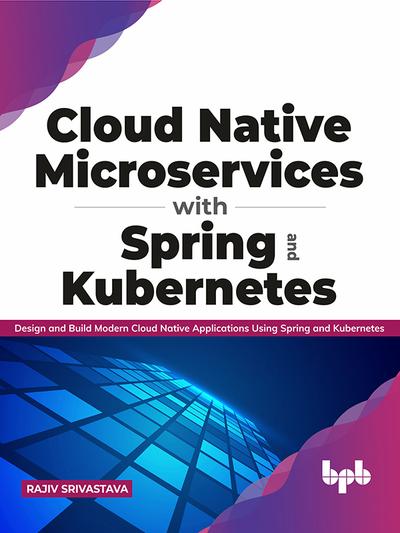Spring Cloud and Kubernetes both complement each other to build a cloud-native platform and run microservices on the Kubernetes containers. Kubernetes provides many features which are similar to Spring Cloud and Spring Config Server features.
Spring framework has been around for many years. Even today, many organizations prefer to go with Spring because it provides many advanced features with simple ready-to-use libraries. It’s a great deal when Spring developers will only take care of business logic source code and configuration code is managed by DevOps/DevSecOps operation teams or automated CI/CD tools.
Important Note about Netflix OSS: Starting from the Spring Cloud Greenwich release Train, Netflix OSS, Hystrix, Ribbon, and Zuul are entering into maintenance mode and are now deprecated. This means that there won’t be any new features added to these modules, and the Spring Cloud team will only fix bugs and security issues. The maintenance mode does not include the Eureka module. Spring provides regular releases and patches for its libraries; however, Netflix OSS is almost not active and is not being used by organizations.
Let’s discuss a couple of challenges of cloud configuration code with Spring Cloud and Spring Config Server for microservices architecture:

- Tight coupling of business logic and configuration source code: Spring configuration provides tight coupling with business logic code, which makes the code-heavy and also makes it difficult to debug production issues. It slows down releases for new business features due to the tight integration of business logic with cross-cutting configuration source code.
- Extra coding and testing effort: For new feature releases one extra testing effort is required to test new features mainly during integration, regression, and load testing. We need to test the entire code with cross-cutting configurations even for minor code changes in the business logic.
- Slow build and deployment: It takes extra time to load, deploy, and run heavy code because of the strong bonding of configuration and business logic. It consumes extra CPU and RAM for all business-specific API calls.
Spring doesn’t provide these important features:
- Continuous Integration (CI): It doesn’t address any CI-related concerns. It only handles the build microservices part.
- Self-healing of infrastructure: It doesn’t care about self-healing and restarting apps for any crashes. It provides health check APIs and observability features using actuator/micrometer support with Prometheus.
- Dependency on Java framework: It only supports Java programming language.
Kubernetes alternatives of Spring Cloud
Here are a few better alternatives of Kubernetes for Spring libraries:
| Spring Cloud | Kubernetes | |
|---|---|---|
| Service discovery | K8s provides Cluster API, a service that exposes microservices across all namespaces since “kube-dns” allows lookup. It also provides integration with the ingress controller and K8s ingress resources to intelligently route incoming traffic to designated service. | K8s provides ConfigMap and secret to externalize configuration at the infra side natively which is maintained by the DevOps team. |
| Load balancing | Netflix Ribbon provides client-side load balancing on HTTP/TCP requests. | K8s provides load balancer services. It’s the responsibility of K8s service to load balance. |
| Configuration management | Spring Config Server externalizes configuration management through code configuration. | K8s services and ingress resources fulfill partial API gateways features like routing and load balancing. K8s supports service mesh architecture implementation tools like Istio, which provides most of the API gateway-related features like service discovery, and API tracing. It’s not a replacement for the external API gateway. |
| API Gateway | Spring Cloud Gateway and Zuul2 provide all API gateway features like request routing, caching, authentication, authorization, API level load balancing, rate limiting, circuit breaker, and so on. | K8s provides the same features with health checks, resource isolation, and service mesh. |
| Resilience and fault tolerance | Spring Boot Admin supports scaling and self-healing of applications. It’s used for managing and monitoring Spring Boot applications. Each application is considered a client and registers to the admin server. Spring Boot Actuator endpoints help to monitor the environment. | Resilence4j, and Spring Retry projects provide resiliency and fault tolerance mechanisms. They provide circuit breaker, timeout, and retry features. |
| Scaling and self-healing | Spring Batch, Spring Cloud Task, and Spring Cloud Data Flow (SCDF) have capabilities to schedule/on-demand and run batch jobs. Spring tasks can run short-living jobs. A short-lived task could be a Java process or a shell script. | Netflix Eureka. Not recommended to use for cloud-native modern applications. |
| Batch jobs | Spring Batch, Spring Cloud Task, and Spring Cloud Data Flow (SCDF) have capabilities to schedule/on-demand and run batch jobs. Spring tasks can run short-living jobs. A short-lived task could be a Java process, a shell script. | K8s also provides scheduled Cron job features. It executes batch jobs and provides limited scheduling features. It also works together with Spring Batch. |
Conclusion
Spring provides tons of features and has had a proven Java-based framework for many years! Kubernetes provides complimentary features which are comparable with Spring features and can be replaced to extract configuration code from the business logic. Cloud-native microservices’ service architecture (MSA) and 12/15 factor principles recommend keeping cross-cutting configuration code outside of the business logic code. Configuration should be stored and managed separately. In MSA, the same configuration can be shared across many microservices, that’s why configuration should be stored externally and be available for all microservices applications. Also, these configurations should be managed by DevOps teams.
This helps developers to focus only on business logic programming. It will definitely make release faster with lower development costs. Also, building and deployment will be faster for microservices apps. Kubernetes provides better alternatives to replace these legacy Spring libraries features, many of them are deprecated or in the maintenance phase. Kubernetes also provides Service Mesh support.
These Kubernetes alternatives are really helpful for microservices applications and complimentary to the Spring Java framework for microservices development!

